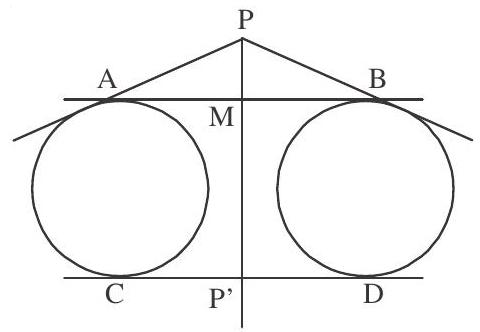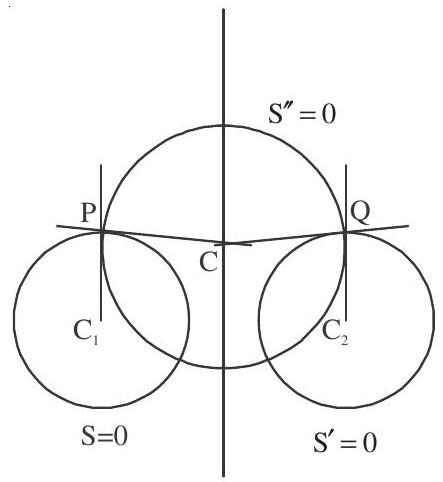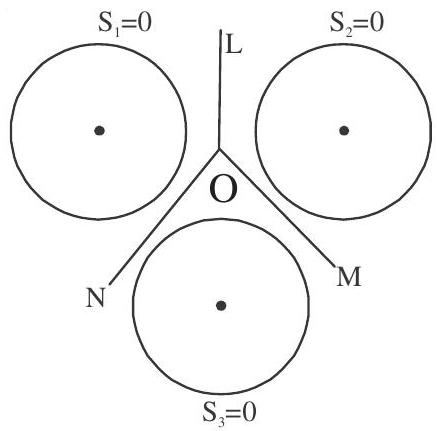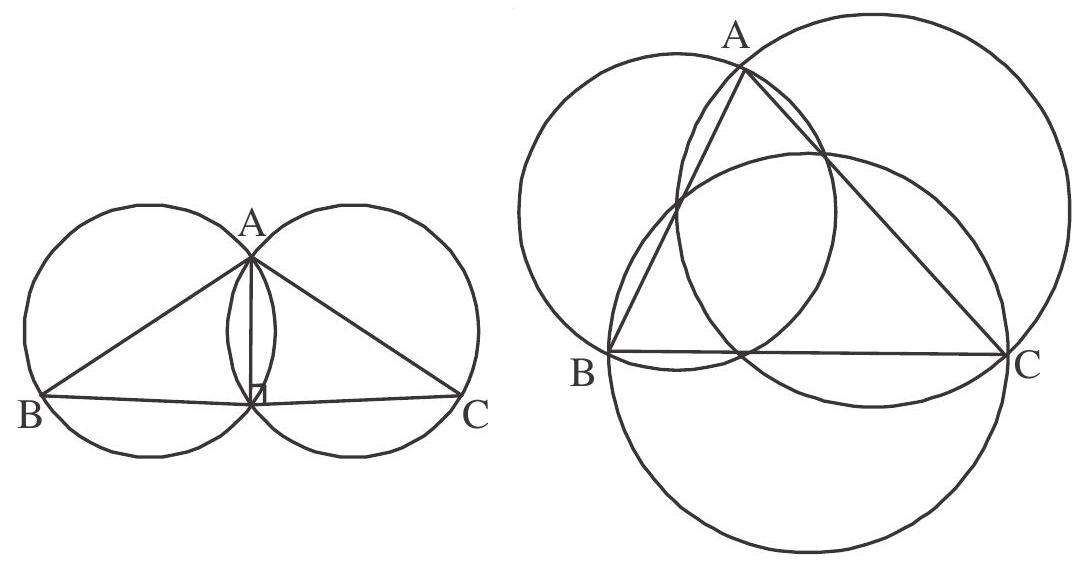CIRCLE-8 (Radical axis)
Radical axis
The radical axis of two circles is the locus of a point which moves such that the lengths of the tangents drawn from it to the two circles are equal.

Consider
Let
or
Equation of radical axis is
Properties of radical axis
1. Radical axis is perpendicular to the line joining the centres of the given circles.
(Slope of radical axis)
2. The radical axis bisects common tangents of two circles

As
Hence radical axis bisects the common tangents
3. If two circles cut a third circle orthogonally, then the radical axis of the two circles will pass through the centre of the third circle, or the locus of the centre of a circle cutting two given circles orthogonally is the radical axis of the given two circles

Hence
4. The position of the radical axis of the two circles geometrically

Radical Centre
The radical axes of three circles, taken in pairs, meet in a point, which is called their radical centre.
Let the three circles be
OL, OM, ON be radical axes of the pair sets of circles

Equations of OL, OM and on are
Family of lines passes through point of intersection of lines
If
Properties of radical centre
1. Coordinates of radical centre can be found by solving the equations
2. The radical centre of three circles described on the sides of a triangle as diameters is the orthocenter of the triangle.

3. The radical centre of three given circles will be the centre of a fourth circle which cuts all the three circles orthogonally. and the radius of the fourth circle is the length of tangent drawn from radical centre of the three given circles to any of these circles
Centre
Examples
1. The equation of the three circles are given
Show Answer
Solution: We know that the point from which lengths of tangents are equal in length is radical centre of the given three circles
Radical axis of first two circles is
and radical axis of second and third is
Solving (1) and (2) equations we get
2. Find the radical centre of circles
Show Answer
Solution :
Let
Equations of radical axis
Solve equations (1) & (2) we get
(1)
radius of fourth circle cutting these three circles orthogonally is length of tangent from this centre to any one circle
3. Find the radical centre of three circles described on the three sides
Show Answer
Solution : We know that radical centre of 3 circles described on the three sides of a triangle as diameters is orthocenter of the triangle.
Slope of line
We know that orthocentre of a right angled triangle is the vertex where it has right angle.
Solving (1) & (3) to get orthocentre










